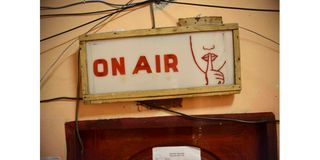Somalia launches first female-led news agency

Somalia has launched an all-women media house with full control of their content.
What you need to know:
- Somalia has launched an all-women media house with full control of their content.
- Youngest journalist Shukri Mohammed, says she wants to highlight challenges faced by women in the political space.
- The journalists will tackle taboo subjects through hard news and in-depth features through television, radio and online media.
Somalia has launched an all-women media house with full control of their content.
Six female journalists from diverse backgrounds, will team up to increase women's visibility in news.
“Some people might not like that I play football and lead a media team but nobody will ever change my mind, said Nasrin Mohammed, the chief editor.
The youngest journalist Shukri Mohammed, who left her rural home in Baidoa for the first time, told the Guardian that she wants to highlight challenges faced by women in the political space.
Kiin Fakat who also joins the team and who grew up in one of the three Dadaab refugee camps in Kenya, said she hopes Bilan (the name of the media house) will offer a safe environment for women to share their stories.
Bilan, which translates to bright and clear in Somali, will be hosted inside the Dalsan Media Group's offices in Mogadishu.
The journalists will tackle taboo subjects through hard news and in-depth features through television, radio and online media.
The United Nations Development Programme (UNDP) funded unit will also be supported by a team of mentors and trainers from local and international media.
The best final year female journalism students at two universities in Mogadishu, will also get a six-month internship opportunity at Bilan, in a programme aimed at developing the next generation of Somali women journalists.
Why it matters
According to UNDP, “Women journalists in Somalia are harassed not just on the streets but even inside their own offices. They are often denied training opportunities and promotions and shut out of decision making."
Moreover, news coverage lacks programming on women-centred issues such as childcare, domestic abuse and equal political representation.
Research conducted by Global Media Monitoring Project (GMMP) in 114 countries in 2015, showed that only 24 per cent of all individuals seen, heard or read about in the media were women.
Additionally, women were least represented in political and economic news and topics that command greater broadcast airtime and print news space.
"Women primarily appear in news based on their personal experience or as popular opinion providers and eyewitnesses to events rather than subject matter experts," the study showed.
The study isolated unconscious bias, tight deadlines, industries with a lack of women in leadership and cultural challenges as some of the reasons that limit the use of women as news sources.
Bilan can draw inspiration from India's first all-women digital news network Khabar Lahariya (News Waves) in Hindi, which started as a local language newspaper in 2002 with the support of a Delhi-based gender education organisation.
So far, the network has produced content that has disrupted the narrative on rural women and broken barriers with their feminist approach.





